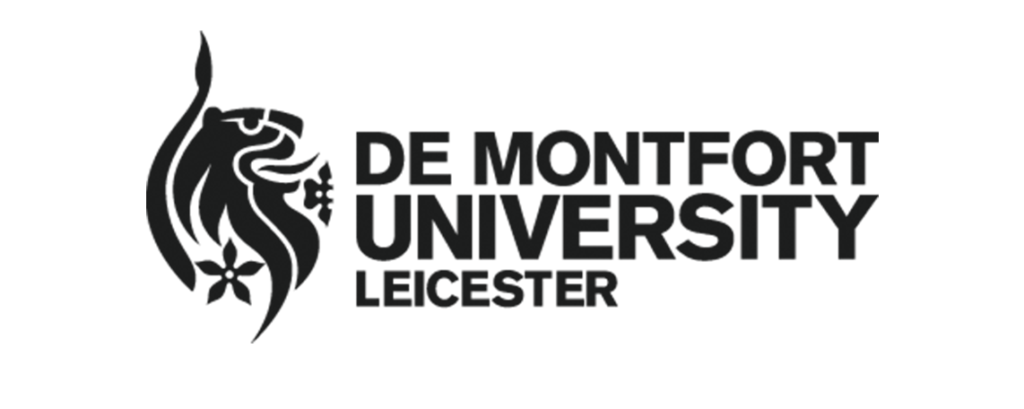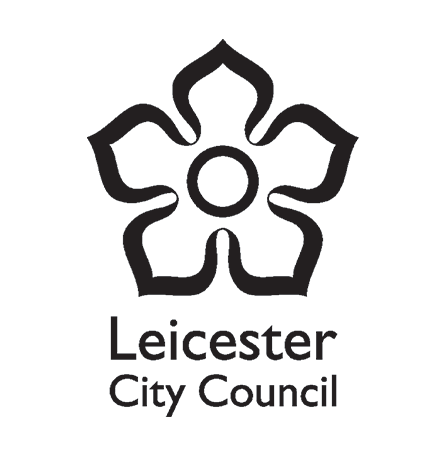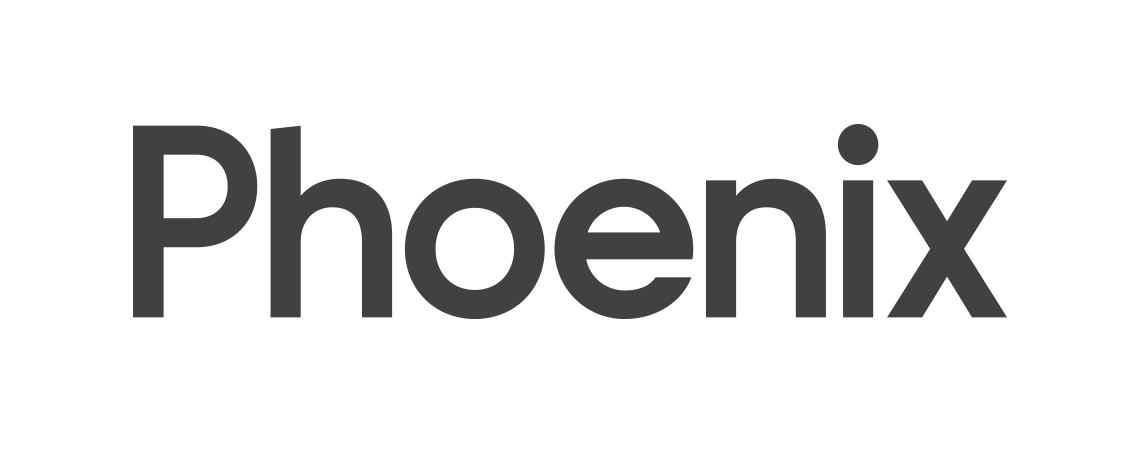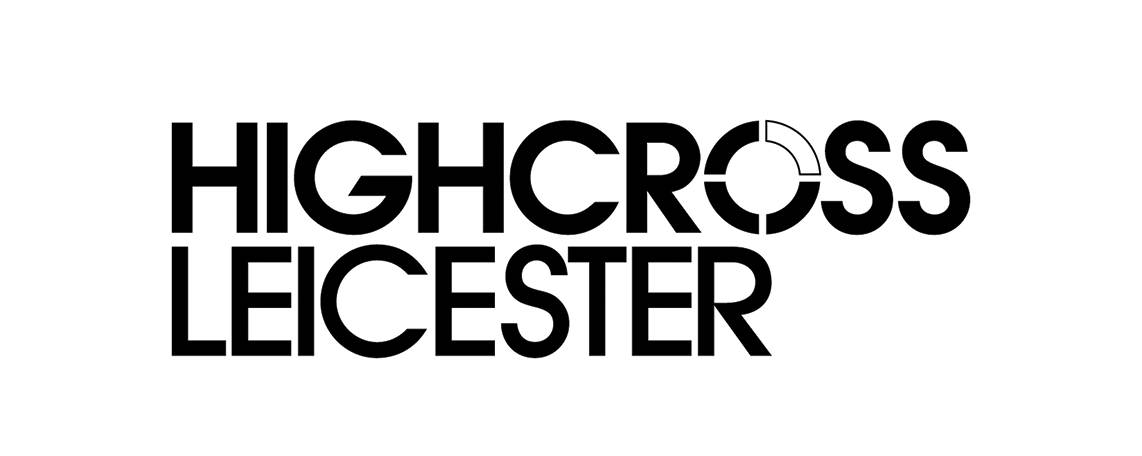Festival backstory
We are building on the last two years’ events, this year scaling up even more than our last event which ran in 2019. Before we tell you more about this year’s event, let us share with you a bit about backstory…
The Festival began as a broad discussion between Luba Elliott (Curator) and Tracy Harwood (Festival Director). Luba has considerable experience of running events and showcasing Creative AI that has generated international interest, including at the global Artificial Intelligence forum, NeurIPS. Tracy has a particular interest in engaging audiences with emerging technologies and her research looks at the impact of these have in changing behaviours. From an initial ‘wouldn’t it be interesting if we could do an event in Leicester…’, Tracy and Luba quickly began to plan how it might be achieved, with a main goal being to find novel ways to raise the general public’s understanding of the capabilities and question marks around AI.
As our thoughts began to take shape, we talked to Chris Tyrer, the digital arts programme manager at Phoenix – Phoenix is the natural home in Leicester for conversations about contemporary digital arts. The forming team then quickly realised that another partner was needed to generate the all-important public impact. So, that’s when Hammersons, owner of Highcross Shopping Centre, became involved.
With a tiny budget of just £4000 donated by the #DMULocal community arts programme at De Montfort University, the four partners managed to achieve a fairly big hitting event in 2018. The event drew heavily on one Tracy’s colleagues at the Institute of Creative Technologies, Fabrizio Poltronieri, whose artwork, Hatred Apparatus, had recently been shown at Ars Electronica (Linz, Austria). The team asked Fabrizio to consider how the work might be reinterpreted for a public domain, and without the hate speak! A couple of months later, in May 2018, Love Apparatus was showcased as a live AI in Highcross Shopping Centre. The artwork used Twitter to respond to tweets that mentioned #LoveLeics in a message, drawing on a massive dataset of poetry that it had been trained with.
Image: Love Apparatus 2018
In addition, the team were delighted to have the support of other artists: the HumanMachine improv comedy collective performed a live Turing test with the audience; Anna Fusté, based at MIT MediaLab, travelled from Boston (USA) to Leicester and ran workshops with school children from the Sandfield Close Primary School; Pinar Yoldas’ (Ann Arbor, USA) KittyAI was presented in the Phoenix Gallery. Between these activities, a series of artists talks and a short film season which included the newly released Alpha GO, the Art AI Festival generated an astonishing level of interest for what was a rather low key and highly experimental Festival – with Highcross’ participation, we reached over 600K people in the city and online through our social media presence we reached around 200K. We also generated a lot of press interest through the children’s workshops.
The success of this event culminated in the Art AI Festival being awarded Leicestershire Live’s inaugural ‘Innovation in Creative Sector’ award.
In 2019, building on its previous year’s success, the Art AI Festival showcased a wider range of creative AI artworks in more venues across Leicester. This included Mario Klingemann’s Interstitial Space and Libby Heaney’s Britbot, showcased at Phoenix; Gene Kogan’s Neural Synthesis, showcased at Leicester’s NHS Dementia Outpatients’ Department and the Central Library; Nadine Lessio’s Useless Machines, showcased at Haymarket Theatre and Sophia Crespo’s Neural Zoo, showcased at Highcross and Haymarket Shopping Centres. This sat alongside an exciting live comedy improv performance by Improbotics (the reincarnation of HumanMachine who performed for us in 2018) and a special VIP guest speaker, Gerhard Fischer, one of the founding thinkers on ‘the human in the design’ and a series of high-profile speakers in a one day conference held at Phoenix. You can find information about the 2019 event on our legacy website www.art-ai.dmu.ac.uk.
Mario Klingeman’s Interstitial Space 2019
This year, we are delighted to bring to you an extended 10 month-long programme of installations in venues across Leicester alongside a monthly online programme of artist talks and a film season hosted by Phoenix. We are also super excited that two of our installations running between October 2021 and March 2022 are co-located at the Dubai Expo, placing Leicester’s Art AI Festival on the World’s stage!
What is AI?
Today, AI is everywhere – and yet virtually invisible to us. So what is AI, and why should we care? As far back as the 1950s, it was described (by Marvin Minsky of MIT Media Lab and John McCarthy, a US-based computer scientist who became known as the ‘father of AI’ and coined the term ‘artificial intelligence’) as a technology, or machine, that would perform a task which if conducted by a human would require intelligence to complete. This is obviously a very broad definition, and human intelligence is applied to a vast array of tasks – planning, learning, problem-solving, decision-making, interpretation, knowledge presentation, manipulation as well as social intelligence and creativity. AI is now commonly used in speech and language recognition systems such as the virtual assistants, Amazon’s Alexa and Apple’s Siri, computer games, as well as in applications (APIs) that enable you to identify your friends and family members in photographs online, and by businesses such as your bank to detect fraudulent activity. It will increasingly be used to make sense of the ‘internet of things’ sensor datasets that will in future connect our ‘smart cities’.
AIs fall into two broad categories: narrow AI and general AI. Narrow AIs are used for very specific and tightly defined tasks but artificial ‘general’ intelligence (AGI) is quite different. AGIs are intended to be flexible and capable of learning, possibly in the future becoming ‘superintelligences’ – it is the type of AI that is often depicted in sci-fi films such as Hal (2001: Space Odyssey), Skynet (Terminator) or Ava (Ex Machina). These AIs are ‘trained’ using powerful computer processors and machine learning models (eg., Google’s TensorFlow) to ‘deep learn’, working with huge datasets to produce new data on which they continue to learn. In effect, they create very large databases that enable them to pattern match in order to assimilate a learned task. This learning can be seen in, for example, IBM’s Watson, which won the US quiz show Jeopardy in 2011 by beating the best human players, and Google’s DeepMind AlphaGo, which won the ancient Chinese game of Go against a human Grandmaster in 2016. Both these examples demonstrate the capability of the technologies to recognize and respond to a problem almost instantly. You can see more about some of the fictional representations of AI in our film season, being hosted by Phoenix.
Fuelled by science fiction, robots that are increasingly autonomous, that can navigate the world and communicate with us in human-like ways, are now overlapping with AI technologies. These kinds of devices are evidenced in the near future of self-driving vehicles, package delivery bots and drones and various service robots that will increasingly interact with us as hotel and business receptionists, through transcription services and social media – such as, for example, Heaney’s Britbot (ran at our 2019 Festival) and also that running at various points of interest this year for our Hello Lamp Post installation, although not a robot, the AI communicates as if it were human.
Libby Heaney’s Britbot (at the Art AI Festival 2019)
In March 2018, Tesla successfully drove its first semi-autonomous electric trucks across California whilst Uber’s fully autonomous taxi killed a pedestrian in Arizona, the first by an autonomous device but probably not the last. The technologies also regularly produce realistic imagery which replicate image and voice of humans – in 2013, Eguchi Aimi, a singer with the Japanese all-girl band AK48 was revealed as ‘not real’ – this was some time after they had achieved a number of chart-topping songs – and today we rarely turn to any media channel without confronting the spectre of fakery in our midst. This year, we present an interesting example of a ‘deepfake’ in the guise of Elvis Presley, another highly topical installation by Libby Heaney. These stories are generated, targeted and distributed using data miners and AIs. And yet, AIs are capable of much good: they may be used to detect healthcare problems before symptoms appear, can provide comfort and companionship to the lonely and elderly, such as Cera and Bloomsbury AI’s Martha, and support executive decision-making, such as Tieto’s Alicia T, the latter potentially ensuring business profits are maximised and its finite resources well managed.
Stephen Hawking, the ground-breaking Cambridge physicist who passed away in March 2019, famously stated that AIs pose a fundamental threat to human civilization, a statement also supported by Tesla’s Elon Musk. Their claims, among the voices of many others working in research and industry as well as government and policy, pave the way for a more informed and open discussion on devising a working code of ethics in the development, application and deployment of AIs. Whilst practically, at present, the technologies are a long way, maybe decades, away from becoming the superintelligences portrayed in our films, the future threats are real. Robot AIs are very close to conducting routine, manual tasks that were formerly the domain of low-skill workers (eg., fruit picking and warehouse packing). Forecasters suggest, however, that AIs are more likely to enhance and augment our everyday mundane jobs than replace us. What do you think?
Creative AI
Ever since Google DeepDream captivated the world with colourful puppyslugs, more and more artistic projects incorporating the techniques of artificial intelligence have been making their way into the mainstream. Artists and creative technologists are experimenting with these tools to generate animations in the style of their ink drawings (Anna Ridler), to explore their artistic qualities and limitations (Mario Klingemann) and to understand how human actors can give meaning to AI-written playscripts (Sunspring). Aside from applying artificial intelligence as a tool, other artists are thinking more broadly about the implications of living in a world heavily influenced by AI technology, whether that’s about our malfunctioning technological inventions (Zach Blas) or the future possibilities of satellite AIs becoming artists (Lawrence Lek). Working with, or thinking about intelligent machines has become the artistic preoccupation of the 21st century.
Gene Kogan’s Neural Synthesis (at Art AI Festival 2019)
In fact, Leicester has a long history with the role of AI in art – De Montfort’s Ernest Edmonds (Director of Institute of Creative Technologies) is an internationally recognized pioneer in the field, developing a form of computer-arts practice over 50 years ago! Indeed, some of that work was showcased in Leicester in May 2019 at the Computer Arts Society’s 50 Years celebration. His and other artists in this domain, including some of Poltronieri’s work (see installation at Green Dragon Square for our festival) can be also seen in the digital collection at the V&A in London.
Globally, some of the newest artworks in the field include Golan Levin with Lingdong Huang’s Ambigrammatic Figures legible both upside-down and right-side up; Joel Simon and Tal Shiri’s Derivative Works of AI-made image collages of faces; Philipp Schmitt’s Declassifier, overlaying dataset images over objects detected in an image; Everest Pipkin’s Lacework, using AI to reinscribe a video dataset of daily actions; Terence Broad’s Teratome made with network bending techniques; Daniel Ambrosi’s Abstract Dreams; Vishal Kumaraswamy’s Swaayattate (Autonomy), a set of films on human-machine relationships and gender, caste and labour; driessens & verstappen’s Pareidolia, where facial recognition finds faces in grains of sand; Mario Klingemann’s Appropriate Response, a series of changing letters to explore meaning, expectation and relationship with AI; Guillaume Slizewicz’s I can remember, about the creative potential of image analysis; Carrie Sijia Wang’s An Interview with ALEX, a simulation of an interview with an AI HR; Holly Grimm’s Aikphrasis Project, where artists respond to AI-generated text; Alexander Reben’s Am I AI (The New Aesthetic) artworks dreamed up by AI and produced in real-life by the artist or others; Nina Rajcic’s Mirror Ritual, a project on human-machine co-construction of emotion; Vibe Check by Lauren Lee McCarthy & Kyle McDonald, which enacts another control system through the passive observation of our neighbours; Entangled Others & Sofia Crespo’s Artificial Remnants of generated insects.
Gallery and museum-based artworks have been included in The State Tretyakov Gallery in Russia, where three fairytale paintings with enlivened with AI, while the search engine Yandex made a gallery of GAN art and Matt Round for AI street art. With the start of the COVID lockdowns in early 2020, Occupy White Walls helped users fill a virtual art gallery with the help of AI suggestions. Purdue University students made a play for human and AI spectators. Bucharest Biennial will now be curated by an AI. The National Archives began work on a computer vision search platform for identifying and matching images across digitised collections. The Cleveland Museum of Art invites users to upload images and get matched with work from their collection. Fabian Offert developed a dataset-agnostic, deep visual search engine for digital art history based on neural network embeddings. Benjamin Lee’s Newspaper Navigator enables you to explore historic newspaper photographs. Aleksey Tikhonov averaged art from classical paintings and Merzmensch reviewed his experiments from 2020.
You can keep track of recent developments by subscribing to our curator, Luba Elliott’s, periodic newsletter, where she reports on creative AI in art, music, text and a breadth of other applications, events and happenings around the world.
The Festival Team
TRACY HARWOOD
Tracy is the Art AI Festival Director. In her day job, she is Professor of Digital Culture at the Institute of Creative Technologies, De Montfort University, Leicester. The IOCT promotes practice-based, transdisciplinary research into the future of interaction in a distributed and connected world. Its mission is to understand professional and creative practices across disciplines and to develop and advance such practices. Research focuses on technological innovation in professional practices, art, performance, music, games, machinima and the application of emerging technologies in public environments. It generates new knowledge that has an impact on everyday creativity, the arts, new technologies, cultural exchange and innovation in social structures.
@tgharwood
tharwood@dmu.ac.uk
CHRIS TYRER
Chris leads the digital art and culture programme at Phoenix Leicester, an independent cinema and art centre, an Arts Council England National Portfolio Organisation dedicated to exploring the creative and cultural impact of media and technology.
Chris has commissioned and presented work by leading international digital artists and creators including Julian Oliver, Semiconductor and Anab Jain. He also managed a programme of support and development for emerging artists that has seen new commissions from exciting young artists like Kitty Clark. Chris’ background is in contemporary art practice and curating, holding a BA in Fine Art from De Montfort University and a Masters degree in Art Museum and Gallery Studies from the University of Leicester.
LUBA ELLIOTT
Luba is the Art AI Festival curator. She is also an artist and researcher specialising in artificial intelligence in the creative industries. She is currently working to educate and engage the broader public about the latest developments in creative AI through monthly meetups, talks and tech demonstrations. As curator, she organised workshops and exhibitions on art and AI for The Photographers’ Gallery, the Leverhulme Centre for the Future of Intelligence and Google. Prior to that, she worked in start-ups, including the art collector database Larry’s List. She obtained her undergraduate degree in Modern Languages at the University of Cambridge and has a certificate in Design Thinking from Hasso-Plattner-Institute D-school in Potsdam.
JO TALLACK
Jo Tallack is General Manager of Highcross Leicester, the primary shopping centre destination in the East Midlands. Her retail career spans more than 30 years and she has worked for Debenhams, House of Fraser and Woolworths. Jo re-located to Leicester for the launch of Highcross in 2008 and became General Manager in July 2011. Since becoming General Manager of Highcross, Jo has become a well-known face within the business community in Leicester. Jo speaks passionately about her ambitions for both Highcross and the city centre and actively participates and chairs a number of business steering groups and influencing decision making within the city. Jo and Highcross were also part of the award-winning 2018 Art AI Festival, which was recognised at the inaugural Leicestershire Live for Innovation in the Creative Sector.
SEAN CARROLL
Sean is the technical lead for the Art AI Festival installation programme. He has an extensive background in delivering large-scale festivals and events, exhibitions and performances. His recent work has involved leading cutting-edge projects, such as award winning, Bring The Paint international, An Indian Summer Festival, Light the Night Festival and international Sound Art Convention MAKE SOUND.
The company of which Sean is a director, Inspirate, is a non-profit organisation that delivers world-class festivals, events and creative learning programmes that have reached over 320,000 people across the UK. Since 2011, we have produced a plethora of artistic experiences that span across music, dance, theatre, outdoor spectacles, carnival, visual, digital, film and creative education.
SEAN CLARK
Sean is the technical lead for the Art AI Festival online programme. He is also an artist and curator, the Director of Leicester arts company Interact Digital Arts, the Founder of web/mobile developer Cuttlefish Multimedia, owner of the Leicester-based Computer Arts Archive, a Visiting Researcher at the Institute of Creative Technologies at De Montfort University in the UK and an International Professor at Guangdong University of Technology in China. He is also a Fellow of the British Computer Society and active member of the Computer Arts Society. In 2015 he was shortlisted for a Talk Talk Digital Heroes Award for his education work. In 2016 he was the co-winner of the inaugural ArtCHI award in San Jose, CA and the Lumen Prize for 3D/Sculpture in London, UK. In 2019 he was selected to participate in the Mozilla Open Leaders programme.
Become a sponsor of Art AI Festival 2023
The programme for our next Art AI Festival is in development and will be running in 2023 in Leicester. We are open to sponsorship applications for funding the Festival. Please contact Art AI Festival director, Prof Tracy Harwood to discuss opportunities.











